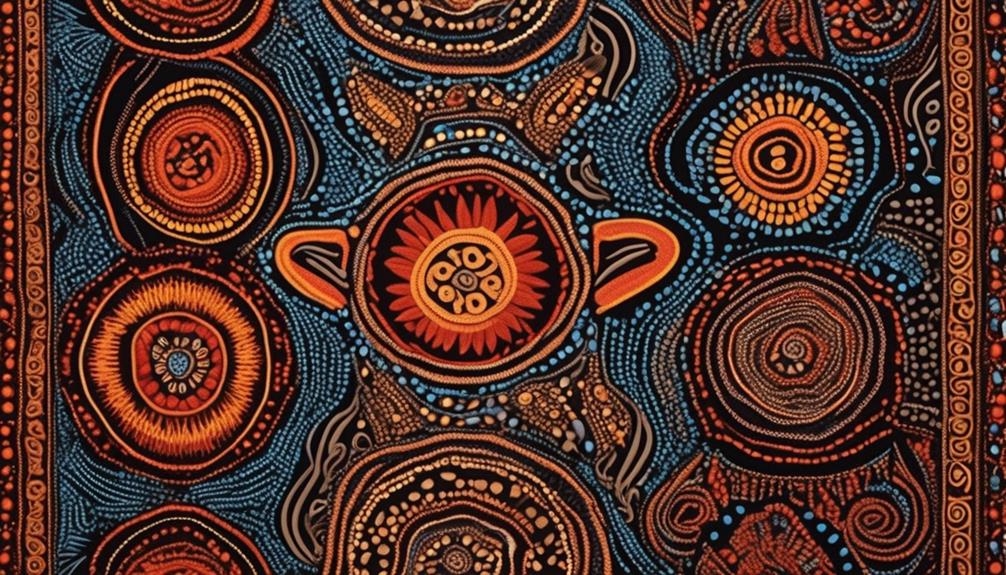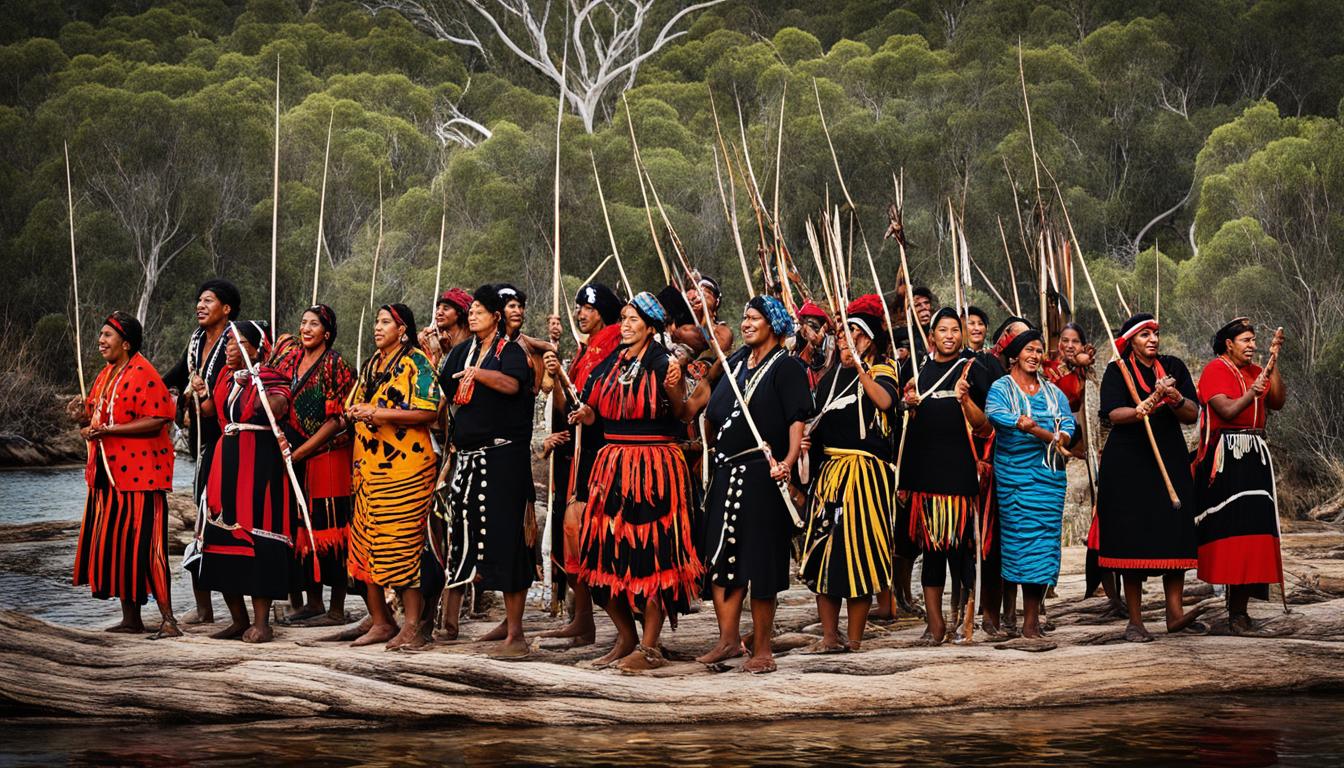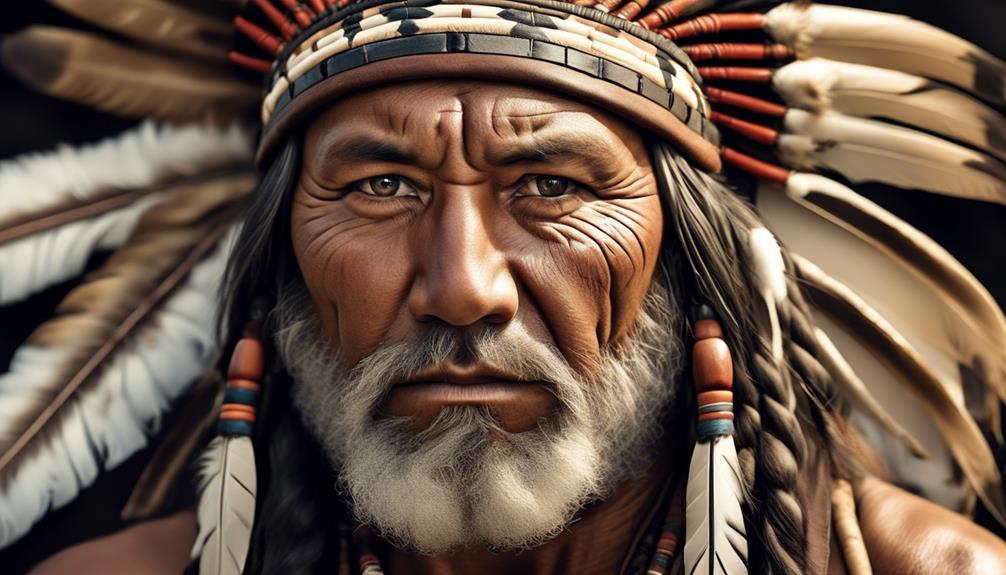Indigenous textiles captivate with their timeless traditions and unique techniques. Exploring the vibrant world of Aboriginal fabrics, we uncover a rich tapestry of history, culture, and creative ingenuity.
From the ancient significance of patterns and motifs to the modern-day renaissance of traditional weaving, these textiles offer a window into a living legacy. Join us as we unravel the threads of this captivating art form and discover the intricate interplay between heritage and innovation that continues to shape the fabric of Aboriginal identity.
Key Takeaways
- Aboriginal textiles have a rich history and evolution, reflecting the cultural and artistic expression of Indigenous communities.
- Traditional techniques such as weaving, batik, and bark painting have been passed down through generations, preserving cultural knowledge and identity.
- Symbolism is deeply embedded in every stitch of Indigenous textile art, reflecting the connection to the land, ancestors, and spiritual beliefs.
- Contemporary Indigenous textile art embraces innovation while honoring traditional craftsmanship and cultural narratives.
History of Aboriginal Textiles
Aboriginal textiles have played a significant role in the cultural and artistic expression of Indigenous communities throughout history. The evolution of these textiles reflects the rich tradition of Indigenous artistry, with each piece carrying stories of the land, spirituality, and ancestral connections.
From the intricate designs of the Torres Strait Islanders to the bold patterns of the Yolngu people, Indigenous artistry is woven into every thread, showcasing a deep understanding of nature and the significance of symbols.
The history of Aboriginal textiles is a tapestry of resilience and creativity. Traditional methods such as weaving, batik, and bark painting have been passed down through generations, preserving cultural knowledge and identity.
The arrival of European settlers brought new materials and techniques, leading to a fusion of traditional and contemporary styles. This textile evolution continues to thrive today, as modern Indigenous artists explore innovative ways to express their heritage through fabric, creating a bridge between the past and the future.
Traditional Techniques and Processes
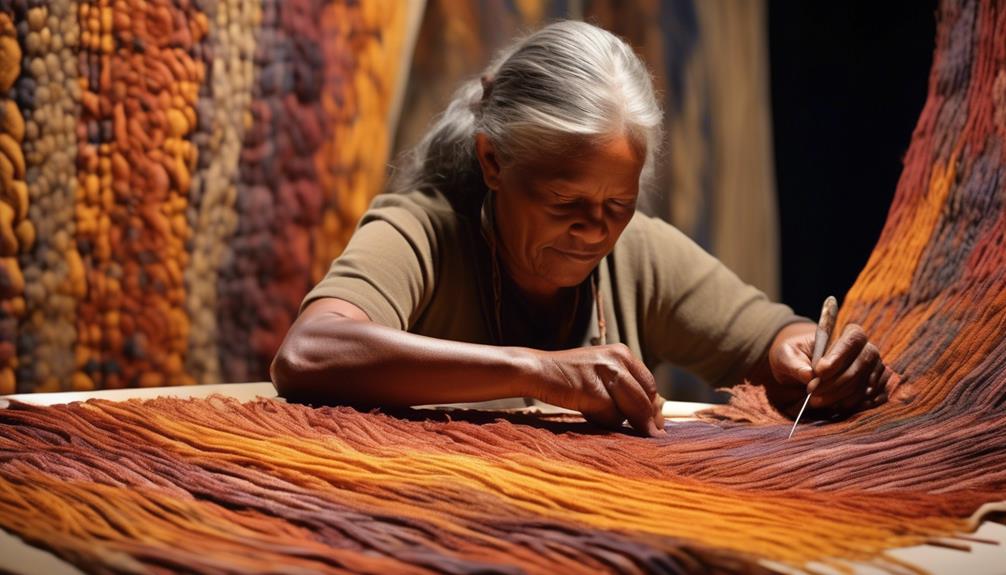
Drawing on generations of cultural knowledge and craftsmanship, traditional techniques and processes in Indigenous textile art have been intricately woven into the fabric of our heritage.
Our ancestors mastered the art of hand weaving, skillfully creating intricate patterns and designs that carry deep cultural significance.
The use of natural dyes is another essential aspect of our traditional textile processes, as they connect us to the land and its resources in a harmonious and sustainable manner. Natural dyes extracted from plants, minerals, and even insects yield a rich and diverse color palette, each hue reflecting the beauty of our natural surroundings.
Furthermore, the intricate process of hand weaving requires patience, precision, and a deep understanding of traditional methods passed down through the ages. The rhythmic interlacing of fibers creates textiles that not only serve practical purposes but also carry stories, traditions, and spiritual meaning within their very threads.
Our mastery of these traditional techniques and processes not only sustains our cultural heritage but also fosters a profound connection to our ancestors and the land they cherished.
Symbolism and Cultural Significance
Our mastery of traditional techniques and processes in Indigenous textile art intricately weaves cultural symbolism and significance into every textile, creating a rich tapestry of storytelling and tradition. Symbolism is deeply embedded in every stitch, with patterns and colors holding profound meanings that reflect our connection to the land, ancestors, and spiritual beliefs.
Each motif carries layers of cultural significance, serving as a visual language that communicates our history, values, and identity. Through our textiles, we encode narratives of creation, the natural world, and ancestral knowledge. The use of symbols such as animals, plants, and celestial bodies conveys our reverence for the environment and the interconnectedness of all living beings. Moreover, the incorporation of geometric designs signifies the complexities of human relationships and societal structures within Indigenous communities.
The cultural significance of our textiles extends beyond mere aesthetics; it serves as a means of preserving and transmitting our oral traditions and heritage. When adorned with these textiles, individuals embody our collective history, carrying forward the stories and wisdom of our ancestors. Consequently, our textiles aren't just fabric creations but living expressions of our cultural resilience and continuity.
Contemporary Applications and Adaptations
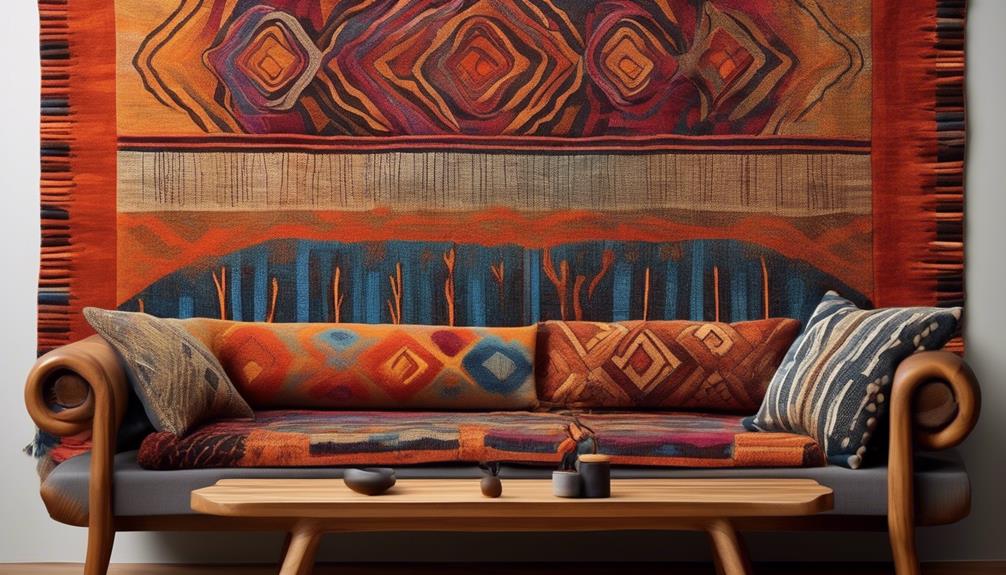
In exploring contemporary applications and adaptations of Indigenous textile art, we're witnessing a dynamic evolution that embraces innovation while honoring traditional craftsmanship and cultural narratives. Modern innovations have seen the integration of traditional Aboriginal textile techniques with contemporary design principles, resulting in an exciting fusion of old and new. This hasn't only expanded the artistic expressions within Indigenous textile art but has also provided economic opportunities for Indigenous communities.
Collaborations: Many contemporary designers are collaborating with Indigenous artists to create unique textile pieces that merge traditional motifs with modern aesthetics, thus fostering cross-cultural understanding and appreciation.
Sustainable Practices: There's a growing emphasis on sustainable and ethical production methods, with Indigenous textile artists incorporating eco-friendly materials and techniques into their practice, reflecting a deep connection to the land and its conservation.
Global Recognition: Indigenous textile art is gaining global recognition and appreciation, with modern innovations enabling wider dissemination of these art forms, allowing for broader engagement with diverse audiences while preserving and celebrating cultural heritage.
Preservation and Revitalization Efforts
Efforts to preserve and revitalize Indigenous textile traditions are essential for safeguarding cultural heritage and fostering intergenerational continuity within Indigenous communities. Preservation methods such as documentation, conservation, and digitization play a crucial role in ensuring that traditional Indigenous textile practices and knowledge aren't lost.
Documenting weaving techniques, dyeing processes, and traditional patterns through written records, photographs, and videos has become increasingly important in preserving these valuable cultural practices. Conservation efforts involve the careful maintenance and restoration of existing textile artifacts to prevent deterioration and ensure their longevity for future generations.
Additionally, digitization allows for widespread access to information and resources related to Indigenous textile traditions, contributing to their revitalization and continued practice.
The cultural impact of these preservation and revitalization efforts is significant, as they contribute to the preservation of Indigenous identity and knowledge systems. By maintaining and revitalizing textile traditions, Indigenous communities are able to strengthen their cultural pride, connection to the past, and sense of belonging. Furthermore, these efforts provide opportunities for intergenerational learning and skill development, ensuring that traditional textile practices continue to thrive and evolve within Indigenous communities.
Frequently Asked Questions
How Can Non-Indigenous People Respectfully Engage With and Appreciate Aboriginal Textiles?
To engage respectfully with any culture's art, it's crucial to approach with an open mind and heart. Being mindful of the cultural significance and history behind the art is essential.
Artistic inspiration should stem from a place of deep respect and understanding. It's important to educate oneself on the traditions and values of the culture to ensure that appreciation is genuine and respectful.
This approach fosters a meaningful connection with the art and its origins.
Are There Specific Protocols or Ceremonies Associated With the Creation or Use of Aboriginal Textiles?
Certainly!
Cultural significance and traditional techniques play a pivotal role in the creation and use of aboriginal textiles.
These textiles are deeply intertwined with specific protocols and ceremonies, connecting the community to their heritage and ancestors.
Understanding and respecting these rituals is crucial for anyone engaging with aboriginal textiles.
It's essential to approach these practices with reverence, acknowledging their cultural significance and the time-honored traditions behind them.
What Role Do Aboriginal Textiles Play in Storytelling and Passing Down Cultural Knowledge?
In Indigenous art, cultural preservation is vital. Storytelling tradition holds immense importance in passing down cultural knowledge.
Textile techniques play a significant role in this process. We use various methods to weave our stories and heritage into these textiles, ensuring that our traditions and cultural knowledge are preserved for future generations.
How Are Modern Technology and Materials Being Integrated Into the Creation of Contemporary Aboriginal Textiles?
Innovative techniques and sustainable materials are reshaping the way we create contemporary textiles. Our approach embraces cutting-edge technology and eco-friendly materials, pushing the boundaries of traditional craftsmanship.
By integrating modern methods and sustainable resources, we're able to produce textiles that honor our heritage while adapting to the demands of the present.
This fusion of tradition and innovation ensures that our textiles remain relevant and impactful in today's world.
What Are Some Common Misconceptions About Aboriginal Textiles and Their Cultural Significance?
Misconceptions about cultural practices can hinder respectful engagement and appreciation. It's essential to understand the depth of their significance.
When it comes to Aboriginal textiles, misconceptions often stem from oversimplified or biased narratives. By recognizing the complexity and cultural significance behind these textiles, we can foster a more respectful and appreciative understanding.
This approach allows for a more meaningful and mutually beneficial engagement with Aboriginal communities and their artistic traditions.
Conclusion
In conclusion, aboriginal textiles aren't just fabric, they're a living, breathing part of our cultural heritage.
From ancient traditions to modern adaptations, these textiles tell the rich story of our people.
The symbolism and techniques used aren't just impressive, they're awe-inspiring.
And the efforts to preserve and revitalize these traditions aren't just important, they're crucial for keeping our cultural identity alive.
Aboriginal textiles aren't just textiles, they're a treasure worth cherishing.
Mary is a passionate writer who brings creativity and a fresh perspective to our team. Her words have the power to captivate and inspire, making her an essential contributor to our content. Mary’s commitment to storytelling and dedication to promoting Indigenous culture ensures that her work touches the hearts of our readers. We’re fortunate to have her as part of our team.
